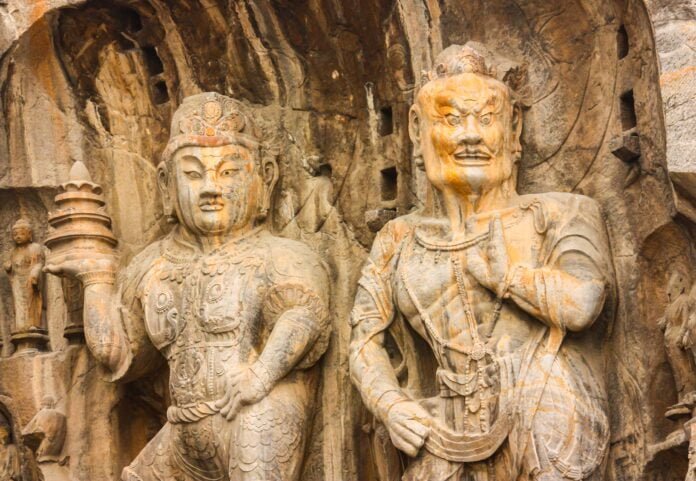Luoyang, located in the central plains of China’s Henan province, is a city steeped in history and culture. With a history of more than 5,000 years, it is known as one of the cradles of Chinese civilization. In recent years, Luoyang has been experiencing a boom in both its cultural and tourism industries.
One of the main attractions in Luoyang is the Longmen Grottoes, a UNESCO World Heritage site that contains thousands of Buddha statues and carvings dating back to the Northern Wei Dynasty (386-534). The grottoes are located on the cliffs of the Yi River and are a testament to the artistic and cultural achievements of the period. Visitors from all over the world come to Luoyang to see this magnificent site, which is considered one of the great artistic treasures of China.
In addition to the Longmen Grottoes, Luoyang is also home to other cultural and historical sites. The White Horse Temple, located on the outskirts of the city, is believed to be the first Buddhist temple in China. Built during the Eastern Han Dynasty (25-220), it has a history of more than 1,900 years. The Luoyang Museum, located in the city center, showcases the history and culture of Luoyang, including the Tang Dynasty (618-907) which was a golden age of Chinese culture.
Luoyang’s tourism industry has been rapidly developing in recent years, with the city attracting more and more visitors each year. In 2020, despite the impact of the COVID-19 pandemic, the city received nearly 36 million visitors, generating revenue of more than 39 billion yuan (about 6 billion U.S. dollars).
To cater to the growing number of visitors, the local government has been investing heavily in infrastructure and facilities. The Luoyang Airport has been expanded and upgraded to become a major transportation hub in central China. The city’s public transportation system has also been improved, with new subway lines and high-speed rail links connecting Luoyang to other major cities in the region.
The local government has also been promoting the development of cultural and creative industries in Luoyang. The city’s traditional handicrafts, such as the Luoyang peony embroidery and the Luoyang bronze ware, are now being marketed to tourists as souvenirs. In addition, new cultural and creative products, such as themed souvenirs and specialty foods, have been developed to attract more visitors.
The city has also been hosting more international events and festivals in recent years. The Luoyang International Peony Culture Festival, held every year in April, is a major event that showcases the city’s famous peony flowers. The festival attracts visitors from all over the world, with more than 5 million people attending in 2019. Other events, such as the China-Luoyang International Tourism Expo, have also been held in the city to promote Luoyang’s tourism industry and attract more visitors.
Luoyang’s boom in cultural and tourism industries has also had a positive impact on the local economy. The city’s GDP reached 381.7 billion yuan (about 58 billion U.S. dollars) in 2020, with the cultural and tourism industries contributing more than 10 percent of the total. The industries have also created many job opportunities for local residents, with more than 180,000 people employed in the tourism industry alone.
In conclusion, Luoyang’s cultural and tourism industries are booming, driven by the city’s rich history and culture, as well as the government’s investment in infrastructure and promotion of cultural and creative industries. With its world-famous attractions and growing reputation as a cultural and tourism destination
Read More:

